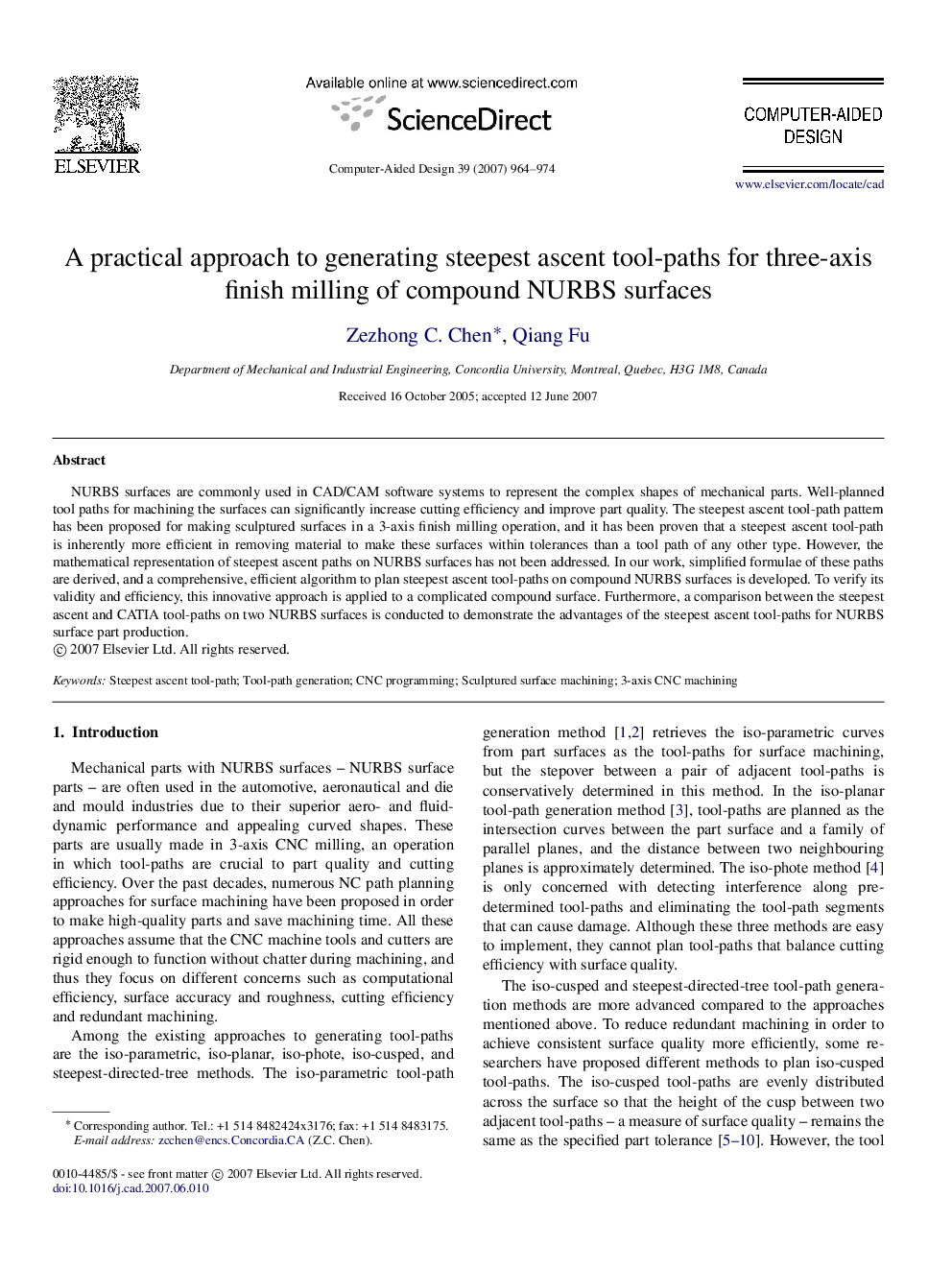| Article ID | Journal | Published Year | Pages | File Type |
|---|---|---|---|---|
| 440422 | Computer-Aided Design | 2007 | 11 Pages |
NURBS surfaces are commonly used in CAD/CAM software systems to represent the complex shapes of mechanical parts. Well-planned tool paths for machining the surfaces can significantly increase cutting efficiency and improve part quality. The steepest ascent tool-path pattern has been proposed for making sculptured surfaces in a 3-axis finish milling operation, and it has been proven that a steepest ascent tool-path is inherently more efficient in removing material to make these surfaces within tolerances than a tool path of any other type. However, the mathematical representation of steepest ascent paths on NURBS surfaces has not been addressed. In our work, simplified formulae of these paths are derived, and a comprehensive, efficient algorithm to plan steepest ascent tool-paths on compound NURBS surfaces is developed. To verify its validity and efficiency, this innovative approach is applied to a complicated compound surface. Furthermore, a comparison between the steepest ascent and CATIA tool-paths on two NURBS surfaces is conducted to demonstrate the advantages of the steepest ascent tool-paths for NURBS surface part production.
